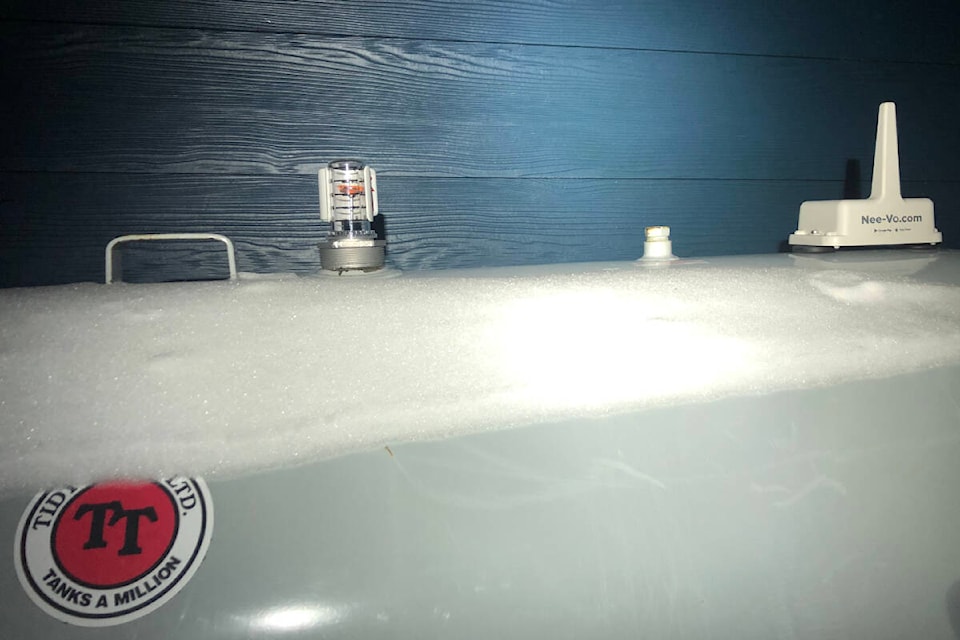On a recent Friday afternoon, in the fading Yukon light, a shadow passed my window.
It was a stranger, and he was headed for our oil tank.
I investigated and discovered he was carrying a strange device: an automated wireless oil tank gauge. In effect, a little robot to watch my fuel gauge 24/7 and text headquarters whenever I need a fill.
If we wanted to have a Twitter meltdown, we could describe the stranger as a stormtrooper of global techno-capitalism on a mission to deploy a job-killing robot. The point of such a network of oil-tank surveillance devices is, of course, to reduce the wage expense of the robot’s masters.
However, my visitor did not seem like the capitalist stormtrooper type. In fact, he seemed quietly pleased by the capabilities of the new device. It meant that his colleagues would not have to waste their time dragging a heavy oil hose across my lawn in Forty Below only to discover that my tank was three-quarters full.
Think for a second about how amazing this is. When my great-grandfather delivered firewood for a living in Whitehorse, he couldn’t have imagined a computer device texting him that a customer was out of firewood.
He didn’t even have a landline phone, and neither did his clients.
Mind you, Sixth and Main was considered the edge of town so the horses didn’t have to drag the firewood sled too far even if it was a small delivery.
But back to the robot perched on my oil tank.
Given the labour shortage in the Yukon, I suspect that laying off delivery drivers is not actually top of mind for the robot’s owners. They are probably having trouble finding staff and are looking for anything that will improve the productivity of their existing drivers so none of their customers run out of oil.
This is an important change in the robot narrative. Over the last 10 years, as buzzwords like automation, artificial intelligence and internet-of-things spread over the internet, there has been much fear about robots gutting human employment.
In the first decade of this century, automation more than decimated manufacturing jobs in North America. Automation also began chewing into other job categories. Digital banking meant less need for tellers. Online accounting platforms meant fewer customers for bookkeepers. Automated check-out kiosks meant fewer people working at fast-food restaurants and shops.
The robots were said to be eying jobs previously thought to be safe, from truck driver to medical image assessment.
What, pundits asked, would these people do for work?
Now, the big question is this: where will we find people to do the jobs we need done? The population is aging. More people want to work part time. Others want to work in a job they can do from home.
A recession may be coming. Some bosses think a period of higher unemployment may tilt the balance of power from employees to employers.
Perhaps. But some economists think the upcoming recession, if it happens, may mostly affect vacant jobs. This is where companies pull down ads for open positions, but don’t actually lay off any existing staff.
Some analysts are even talking about “labour hoarding.” This is where a company has had so much trouble finding staff that, even when orders turn down a bit during a recession, it keeps all its staff on the payroll. Because, otherwise, it won’t be able to find any workers to grow again when the recession is over.
And then, after the recession, the population will still be getting older. The transfer payment will still be rising and still creating new government jobs faster than new housing can be built. That gets you to a Yukon with a structural, long-term labour shortage.
So what would that kind of Yukon look like?
My new robot is just the latest device in my life, and it won’t be the last. In the last few weeks, I’ve used automated tools to do a bunch of things that would have involved a human as recently as a few years ago. I rode on a subway with no driver. I checked into a hotel and got my key without seeing a human. I bought t-shirts at a local store. I booked an appointment to get vaccinated. I bought a hunting license.
An ongoing labour shortage that causes even more investment in such devices is likely to cause higher wages, which will be good for human workers.
Yukoners with the skills to deploy, manage and maintain the robots will be in high demand.
For businesses, the story is mixed. If you have a profitable business with a sound balance sheet, you’ll be able to invest in technology. But if you don’t have access to capital, you won’t be able to afford labour-saving technology. This may put you at a disadvantage versus competitors.
For example, fuel delivery companies still paying drivers to make unnecessary home visits will have to accept lower profits or be priced out of the industry.
This is also likely to be good for cyber security jobs. I don’t know what a hacker would do if they got access to my fuel tank data, but security issues around other devices is more worrying.
After some natural fear in the early years, we may learn to love our robots. Especially if someone designs one that automatically shovels our driveways.
Keith Halliday is a Yukon economist, author of the Aurore of the Yukon youth adventure novels and co-host of the Klondike Gold Rush History podcast. He is a Ma Murray award-winner for best columnist.
